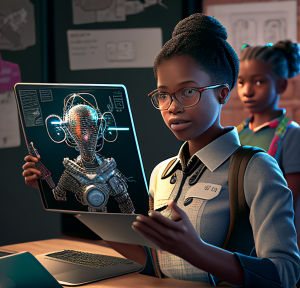A immensely informative presentation was done on Productivity Suits and Productivity Tools. A productivity suit is a set of applications that includes apps like a word processor, a presentation, and an app to make spreadsheets- these three apps are typically the mainstays of any productivity suite. I was actively using the Google and Microsoft suit, but it was like second nature without giving much though to the theoretical aspect of it. While Google suit is my favorite, these productivity suits along with their tools has have endless implications (negative and positive) on both students and teachers, some of which will be discussed below.
Productivity suits enables real time collaboration for both students and teachers thus increasing productivity. One can work in real-time collectively without physically being in the same space using google docs. It is student-centered, as well as it fosters group work and shared understanding among learners. It also facilitates creativity and allows individuals to learn and work at their own pace. Feedbacks are a crucial to support students in understanding how to improve their performance and for teachers to improve their teaching practice. Productivity suit facilitates creativity along with instant and continuous feedback from teachers. The mobile version of the productivity suits like Microsoft Office Mobile and Google Docs for mobile devices allowed users to create, edit, and collaborate on documents directly from their smartphones or tablets. This provides a convenient and flexible way for teachers and students to stay productive while on the go.
While I could have listed several other positive implications, I must acknowledge that there are some cons to using productive suits as well. While it is student centered and fosters creativity, it also create disparity in learning opportunities due to lack of access. The reality is, not all students have access to devices. Collaborating in real-time remotely limits face to face interaction and diminishes social skills among individuals. This was most evident post-COVID where it truly felt like a burden having to go to meetings in person and everyone felt like a stranger even though we interreacted weekly online. In addition to that, completing tasks in productive suits can be distracting as notifications, games and social media are one click away. This also have had significant impacts on individuals’ writing skills with the help of predictive text and autocorrect in both google doc and microsoft office. Lastly, both teachers and students can become overwhelmed with trying to operate the applications of each productive suit. As these applications evolve over time, one has to be abreast with the changes in addition to ALL other daily professional task which can become overwhelming.

 I am of the millennial generation where technology is integrated in all aspect of life and even more so, my job. I was a Secondary School Mathematics Teacher in my home country and I have always chosen to utilized what I thought was the most basic forms of technology. I have used the RenWeb One Software for uploading grades, comments, attendance and so much more. I have also used google classroom, zoom, WhatsApp, emails, Kahoot and other platforms to interact with either administrators, students and, or parents. This was what educational technology meant to me, any tool or software that enables one to complete tasks in an efficient way as an educator or student.
I am of the millennial generation where technology is integrated in all aspect of life and even more so, my job. I was a Secondary School Mathematics Teacher in my home country and I have always chosen to utilized what I thought was the most basic forms of technology. I have used the RenWeb One Software for uploading grades, comments, attendance and so much more. I have also used google classroom, zoom, WhatsApp, emails, Kahoot and other platforms to interact with either administrators, students and, or parents. This was what educational technology meant to me, any tool or software that enables one to complete tasks in an efficient way as an educator or student.